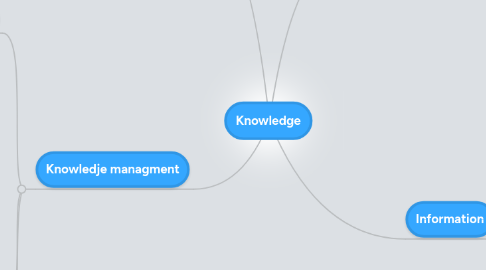
1. Knowledje managment
1.1. Controlling / Target Level Definition
1.1.1. Components
1.1.1.1. Knowledge - Identification
1.1.1.1.1. Existing knowledge
1.1.1.1.2. Sources
1.1.1.2. Knowledge - Concervation
1.1.1.2.1. Where I loose knowledge
1.1.1.2.2. Efficency storage and vocabulary
1.1.1.2.3. Cover all leveles of Formalisation
1.1.1.3. Acquisition - приобретение сбор
1.1.1.3.1. New Staff
1.1.1.3.2. Trainigs
1.1.1.3.3. Access to Sources
1.1.1.4. Development new knowledge
1.1.1.4.1. Researches
1.1.1.4.2. Analys of acquired knowledge
1.1.1.5. Knowledge - Distribution
1.1.1.5.1. Pull approach
1.1.1.5.2. Push approach
1.1.1.6. Knowledge - Usage
1.1.1.6.1. Transformation to activities
1.2. Tasks
1.2.1. Effective Usage of the existing Knowledge
1.2.2. Efforts to retrieve / classify
1.2.3. Share Knowledge re-usability
1.2.4. Improve Communication
1.3. Dimentions
1.3.1. Technology - Proper architecture of Data Warehouse
1.3.2. Organisation - Methodology for Acquisition in BP
1.3.3. People - Culture of information
2. Types
2.1. Explicit Knowledge - Formalised set of rules or definitions
2.2. Tacid Implicit Knowledge - The skills involved in something
2.2.1. Technical knowledge Know How
2.2.2. Cognitive knowledge Imagination
3. Transformation via Knowledge spiral
3.1. Socialization Tacid to Tacid
3.1.1. From people to people
3.2. Externalization Tacid to Explicit
3.3. Internalization Tacid to Explicit
3.4. Combination Explicit to explicit
4. Information
4.1. Levels of information
4.1.1. Instrumental understanding complete idea of the nature, significance, or explanation of something.
4.1.2. Knowledge - information that is organized, synthesized, or summarized with metadata ↑
4.1.3. Metadata: Metadata is data about information. ↑
4.1.4. Information: Information is data in context.↑
4.1.5. Data - Just numbers and symbols ↑
4.2. Heterogeneous
4.2.1. Technically: Different systems
4.2.2. Organizationally: Different entities prefer different systems
4.2.3. Semantically: Different users have different semantics - Jaguar
4.2.4. Accesses: Different access paths for navigating

